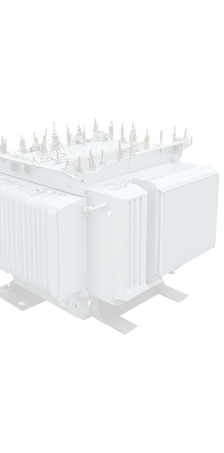Oil-Cooled Transformers are vital for stable and efficient power distribution in industrial and commercial environments. However, like all electrical equipment, they face wear and tear over time, especially in high-demand or harsh conditions. One common solution to extend their lifespan is transformer rewinding, a technical process that restores internal coil windings. But rewinding oil-cooled units comes with its own set of challenges that can impact performance, cost, and safety.
In this blog, we’ll explore the most common obstacles faced during the rewinding of oil-cooled transformers, how professionals tackle them, and what buyers and sellers should know before getting involved in the process.
1. Contamination of the Cooling Oil
Oil is the lifeblood of oil-cooled transformers. It acts as both an insulator and a coolant. During a rewinding job, if the transformer is not thoroughly cleaned before reassembly, contaminants like moisture, metal particles, or even small amounts of old oil can compromise the entire system.
These impurities may lead to dielectric failure, hot spots, and ultimately, short circuits. Professionals ensure the oil is drained, filtered, tested, and, if needed, replaced entirely after rewinding. This step is non-negotiable for long-term reliability.
2. Complex Coil Configuration and Winding Geometry
Not all transformers are made the same. Older or custom-built units may have complex winding structures, and rewinding them is not just a matter of replacing wire. Engineers must replicate the exact winding pattern, layering, and tension to preserve the original magnetic characteristics.
Mistakes in this step can result in high losses, reduced voltage regulation, or overheating. Choosing a reputable transformer company with experience in handling such configurations is critical.
3. Maintaining Insulation Integrity
During rewinding, removing the old winding often damages insulation components like spacers, varnish, and wrapping. Replacing insulation materials with lower-grade substitutes can be tempting to save costs, but it often leads to early failure.
High-voltage oil-cooled transformers demand class-specific insulation materials that can withstand both heat and chemical exposure. Always inquire whether the rewinding shop uses original or equivalent-grade materials for insulation.
4. Core Damage and Realignment Issues
The transformer core is responsible for transferring energy between windings through magnetic flux. Even minor dents or misalignment during the rewinding process can significantly affect performance. Improper reassembly can also cause unwanted vibration or noise during operation.
This is where trained technicians make a difference. Experienced teams use precise alignment tools and techniques to ensure the core and coil assembly remains centered and structurally sound after the rewind.
If you’re planning to sell used transformers, ensuring proper core realignment after rewinding can add more value and trust for buyers.
5. Moisture Absorption Post-Rewinding
Transformers are hygroscopic—meaning they absorb moisture from the air. Once rewound, the unit must be vacuum dried before refilling with oil. Skipping this can result in insulation failure due to moisture content in the paper or oil.
High-voltage oil-cooled transformers are particularly vulnerable. Moisture lowers dielectric strength and causes internal arcing. Reliable rewinding workshops will always include vacuum drying as a standard part of the restoration process.
6. Testing and Certification Delays
After rewinding, the transformer must go through multiple tests like the insulation resistance test, turns ratio test, and short-circuit test. These tests require specialized equipment and can delay the delivery timeline. But skipping any of them can lead to legal and operational issues, especially in regulated industries.
If you’re looking to buy used transformers, always ask for post-rewinding test certificates and quality assurance documentation.
7. Rising Rewinding Costs vs. Replacement
Sometimes the cost of rewinding, combined with new oil, labor, testing, and downtime, may approach the cost of acquiring a refurbished transformer. In such cases, businesses might consider sourcing from a trusted supplier of used transformers for sale near me instead.
If a unit is too damaged or outdated, rewinding may not be economically sensible. Many companies even choose to sell transformers that are beyond practical repair and replace them with newer, more efficient units.
Conclusion: Is Rewinding Worth It?
Rewinding oil-cooled transformers can be a cost-effective way to extend their operational life—but only when done correctly and by qualified professionals. From oil contamination to coil complexity, each challenge demands attention, precision, and experience.
If you’re dealing with older or surplus equipment, you may want to consider partnering with a trusted supplier of surplus transformers who can offer both rewinding services and replacement units. Always compare the rewinding cost with the cost of purchasing a quality pre-owned transformer before making a decision.
Ultimately, regular maintenance, moisture control, and professional assessment are the best tools to keep your oil-cooled transformers running safely and efficiently.



